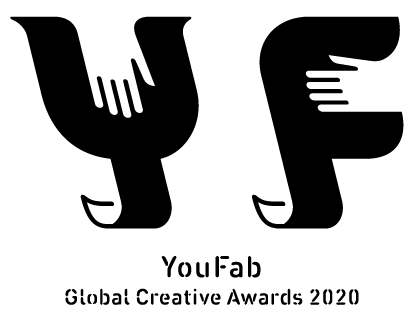-
Work Title
Research Assistant
-
Work Title(EN)
Research Assistant
-
Please describe the concept of your artwork in 1000 words.
Stichbot is conducting the idea of future building technologies, to sewing space with humans who could be trained designers or even people without any background in architecture or robotics. together with people, it shapes textiles surrounding us. This project engages robotic fabrication and virtual communication in the context of textile architecture. In robotic fabrication is aiming the deplorability and flexibility in the way could travel all the essential tools in a box to where we need to tailor. Communication is established on how we share our idea to another, to robot in the world between physical and digital and therefore it used phone due to its multilateralism. The innovation of Stichbot is trying to open up new methodology in mobile robotics, integration of conventional sewing technology, and the use of a two-body robot system to represent existing tools. Robots itself are needle and bobbin holding from both sides. By climbing on textiles, it stitch and path become the sewing seam.
As mention early, Stichbot is a project for people who can be no experiments with robots typically in architecture, the fabrication system depends on the designer, engineer, and construction company, it entwined. Building been design, analyzed, and finally been build, associate with many people, but what if the process could be minimized and began a new way of construction, experience, then tailoring and forming happens simultaneously. Free the limitation from the conventional machines and collaborate with robots we build space. Generally speaking most textile space either fully stationary machine or labor-intensive work due to the flat fabrication process, therefore the idea of sewing directly in place. The designer just follow their intuition, sewing could pass to the robot. Thus, we could understand the material prosperity and tensile strength of the robot from its locomotion, a map drawn by the robot. The robot also could advise us where not to stitch instead of a fabrication tool only execution, it argument architect reachability from our physical limitation enables higher flexibility on a different scale.
Base 3d printed body and off-the-shelf sewing tools, the robot itself could even produce who had 3d printer, on condition that it shares its knowledge worldwide to different communities especially shipping and attempting space being the issue now. it operates on the fabric and stitch where needed. -
Please describe the concept of your artwork in 1000 words. (EN)
-
Work Specification
The overall weight of Stichbot is 960g excluding power cable, needle side is 488g and bobbin side is 472g, width: 102mm, 161mm 180mm. Material is any woven textiles
-
Work Specification(EN)
-
Media CoverageURL
https://issuu.com/you-wenji/docs/2019_ji_booklet_pages_web
-
Video URL
https://youtu.be/CF5AhppwOLQ
-
Your OfficialURL (Website, Instagram, Facebook)
https://www.instagram.com/uwenji/
-
Your Profile
You-Wen is a full-time Research Assistant at Centre for Information and Technology for Architecture (CITA) at The Royal Danish Academy - Architecture, Design, Conservation
(KADK). He holds a Bachelor of Architecture from Tamkang University, as well as a Master in Science in Architecture from Integrative Technologies and Architectural Design Research program (ITECH) at University of Stuttgart.
In 2015-2017 Ji was a Research Assistant and Teaching Assistant at the Digital Design & Fabrication Lab (CCCLab) under Prof Chen Chen-Cheng at Tamkang University Department of Architecture. 2017 He also taught with Assistant Professor Nan-Ching Tai in Department of Interaction Design National Taipei University of Technology.
With a strong interest in robotics, digital fabrication and form-find simulation, he is currently focusing on exploring robot end-effector tools design and bespoke robotic for textile manufacting, also show strong interest in particle simulation for real-time form in fabrication adaptation and prediction. His work includes development of hardware and software tools for textile architecture. Currently, You-Wen is joining Fungal Architectures – found by European Union’s Horizon 2020 where his research focuses on robotic kagome weave. -
Team Members
-
Entrant’s location (Where do you live?)
Copenhagen
- 126


